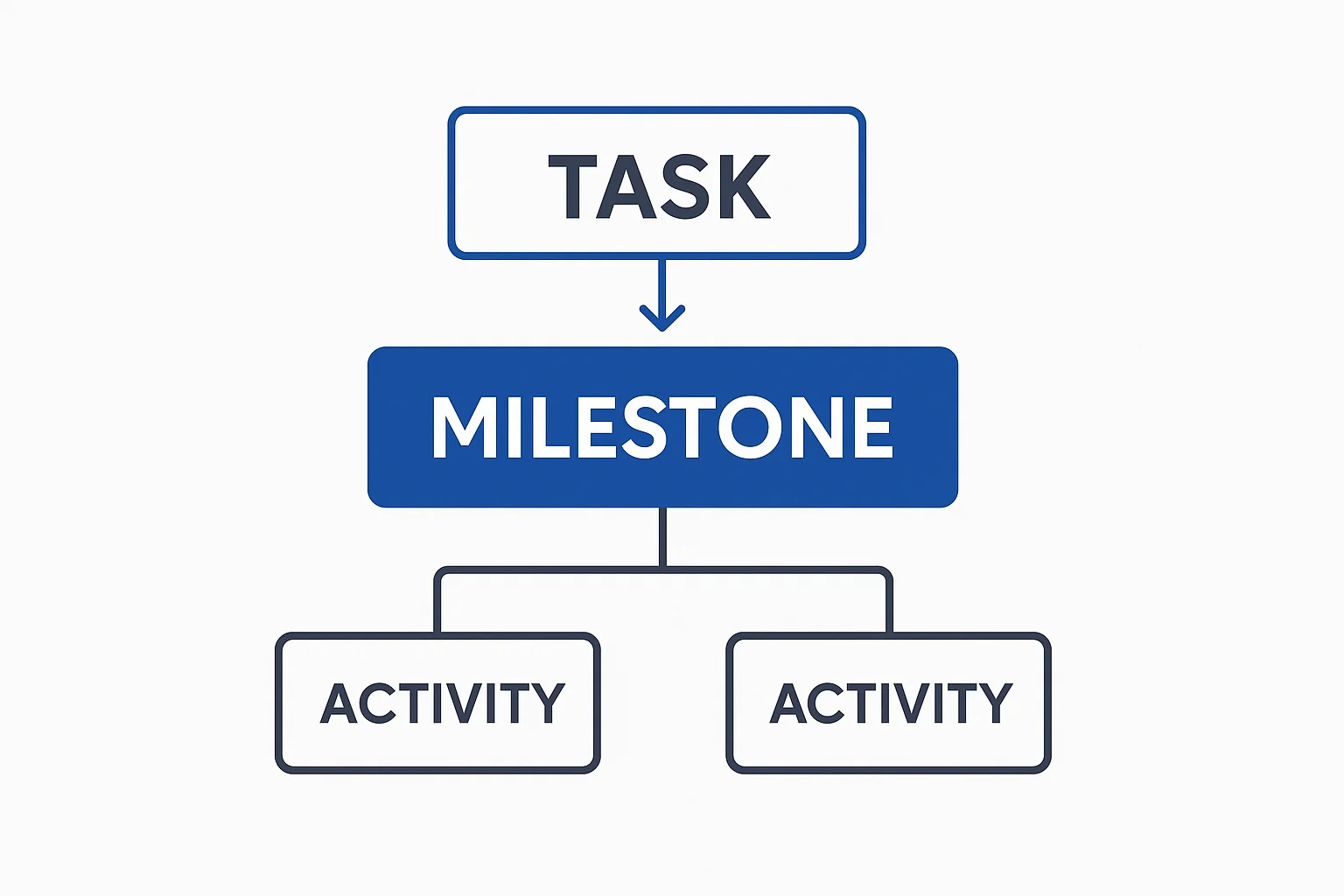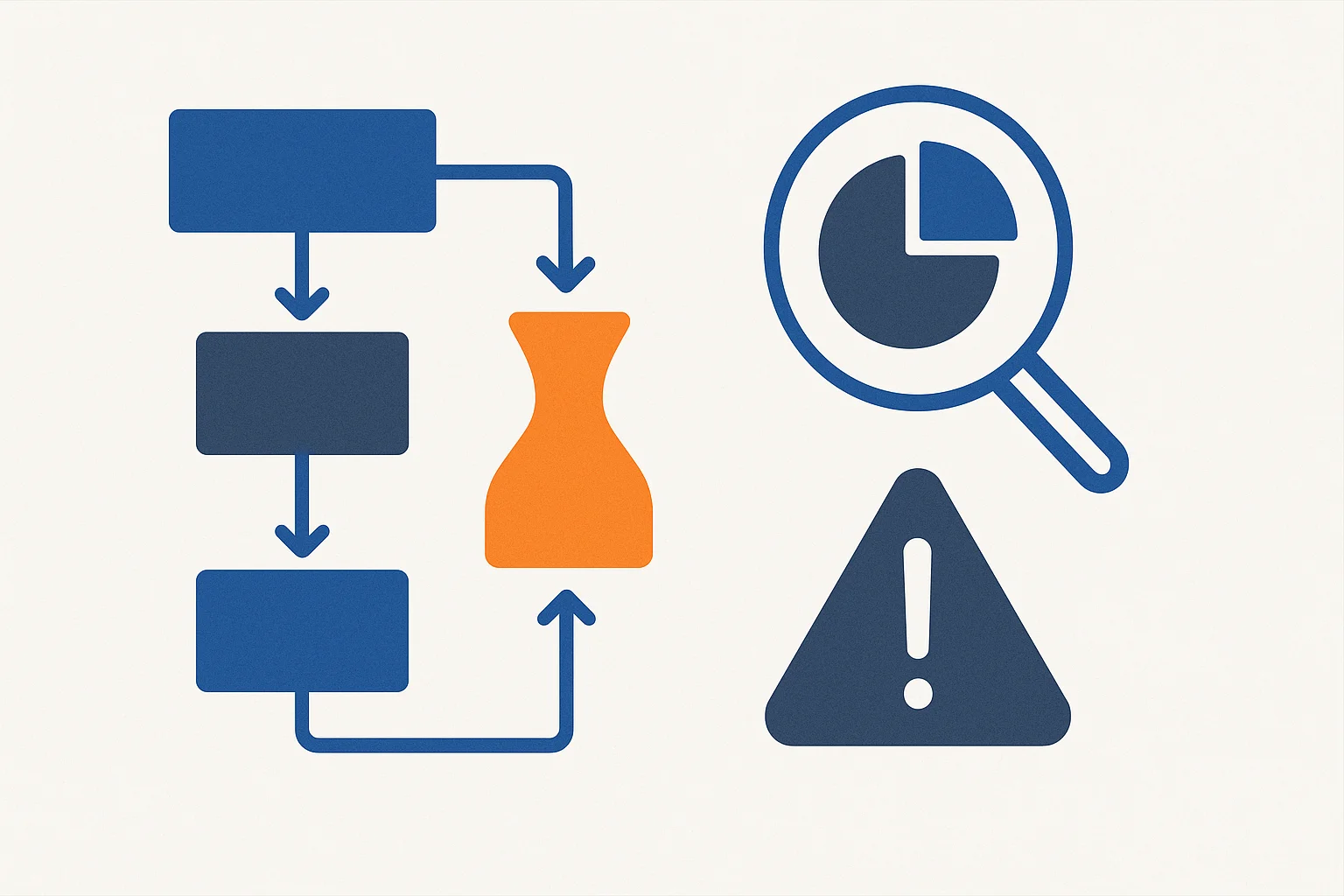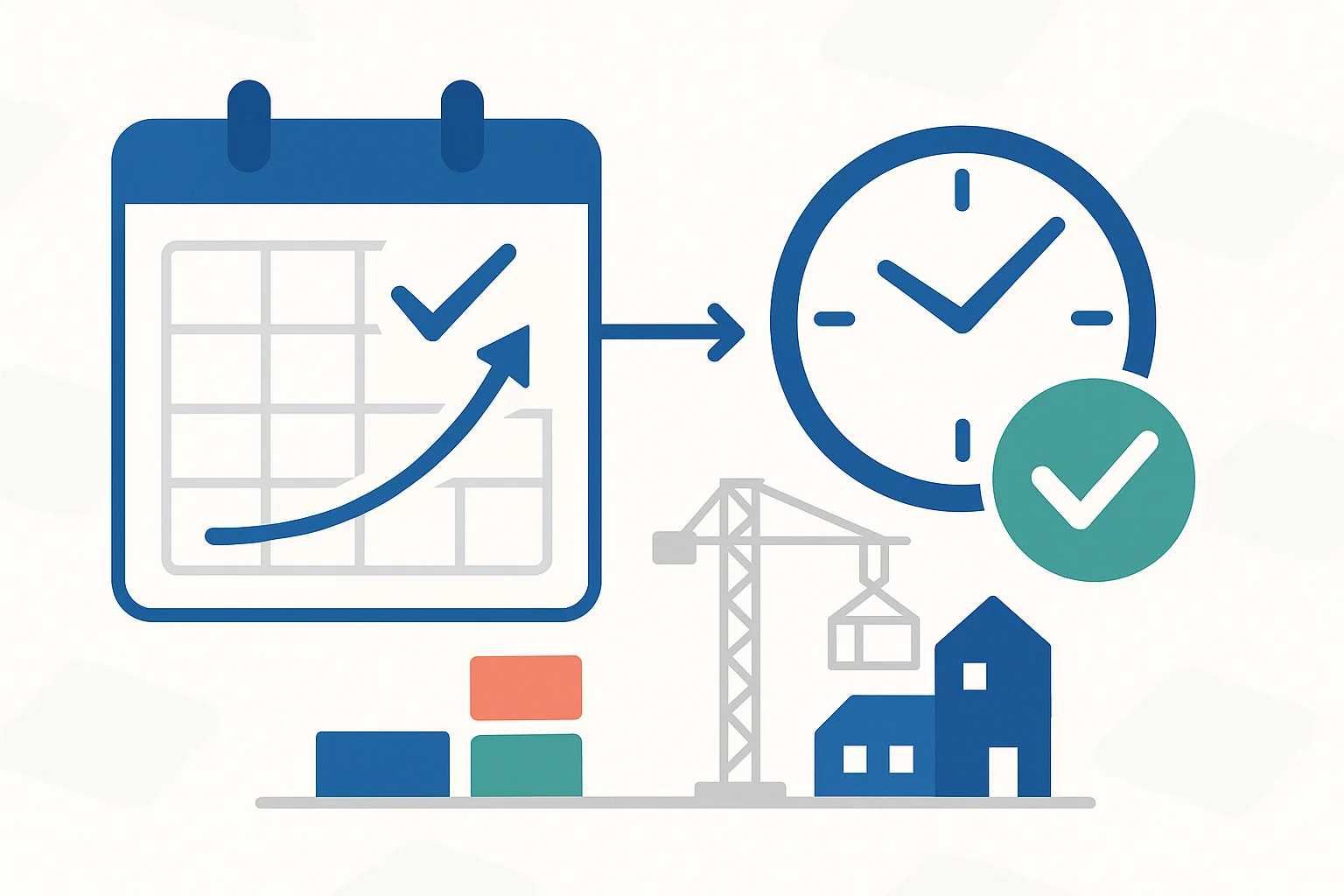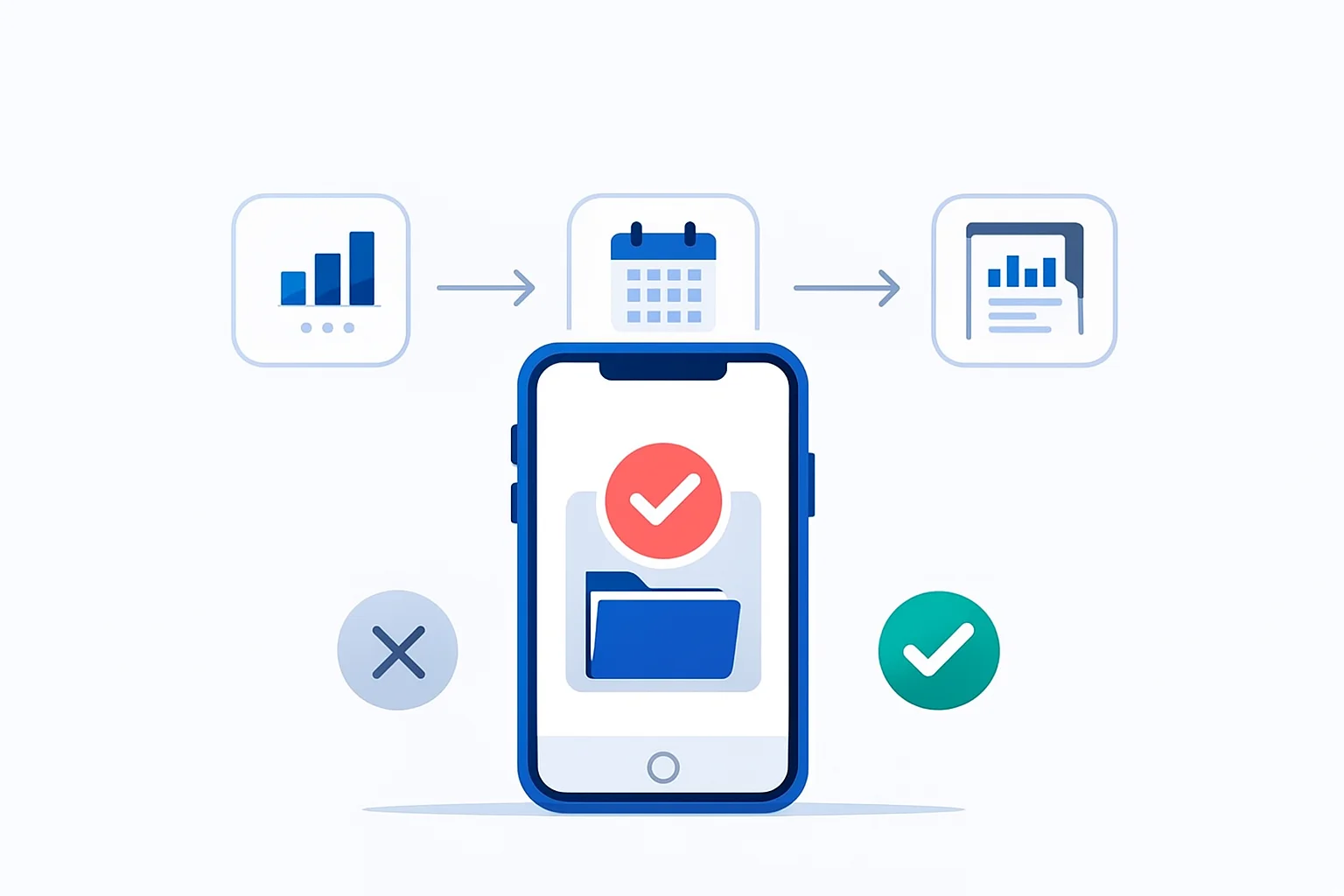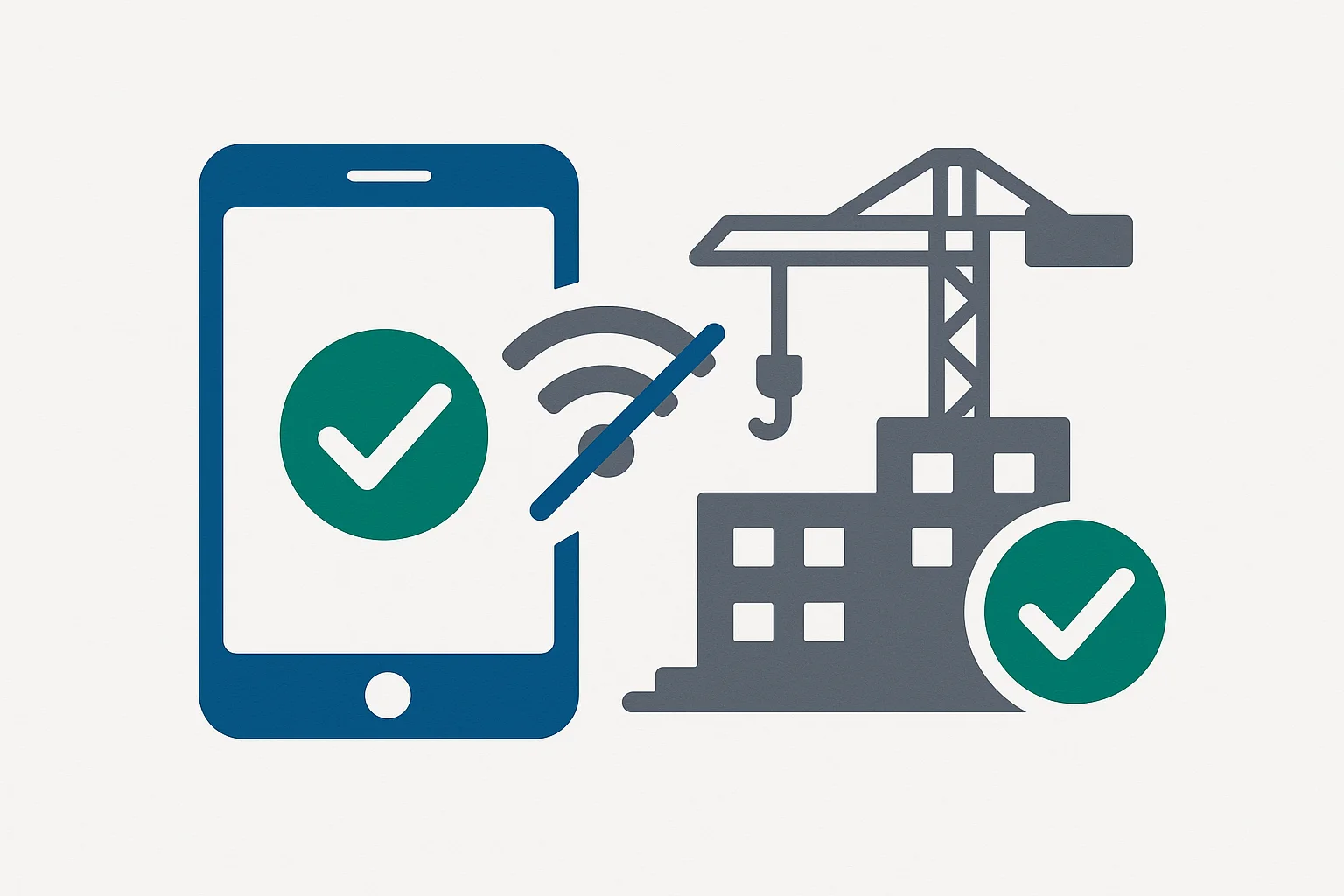Confused about tasks, milestones, and activities? You're not alone. Most contractors use these terms interchangeably, but understanding the difference improves project planning dramatically. A construction management app can help organize these properly.
The Three Levels of Work
Think of construction work as a hierarchy:
Activity → Milestone → Task
From broad to specific, strategic to tactical.
What is an Activity?
Definition: A broad phase or category of work in your project.
Characteristics:
- Large scope (weeks to months)
- Multiple teams involved
- High-level planning
- Strategic importance
Examples:
- Foundation work
- Ground floor construction
- First floor construction
- Finishing work
- External work
Purpose: Activities help you think about major phases and resource allocation at project level.
When to Use Activities
Project planning: Breaking down the entire project Client communication: High-level progress updates Resource planning: Allocating teams to phases Budget allocation: Dividing project budget
Daily management: Too broad for day-to-day tracking
What is a Milestone?
Definition: A significant checkpoint or achievement in your project.
Characteristics:
- Zero duration (it's a point in time, not work)
- Clear completion criteria
- Often tied to payments
- Important for stakeholders
Examples:
- Excavation completed
- Foundation completed
- Slab casting completed
- Building handover
- Inspection approved
Purpose: Milestones mark progress and trigger next steps (like payments or new work phases).
When to Use Milestones
Payment scheduling: Tie payments to milestone completion Progress tracking: Measure how far you've come Team motivation: Celebrating achievements Client reporting: Major updates
Daily tracking: Not detailed enough Task assignment: Can't assign a milestone to someone
What is a Task?
Definition: A specific, actionable piece of work that can be completed in 1-3 days.
Characteristics:
- Small, focused scope
- Assigned to specific person/team
- Clear start and end
- Measurable completion
Examples:
- Pour concrete for columns A1-A5
- Install plumbing in bathroom 2
- Plaster bedroom walls
- Paint exterior north wall
- Install 10 doors on ground floor
Purpose: Tasks are what your team actually does. They're actionable, assignable, and trackable.
When to Use Tasks
Daily management: What to do today Team assignment: Who does what Progress tracking: What's done, what's pending Bottleneck identification: What's holding things up
Client reporting: Too granular, they don't care Strategic planning: Too detailed for long-term planning
The Relationship: Hierarchy
ACTIVITY: Ground Floor Construction (4 weeks)
├── MILESTONE: Slab casting complete (Week 2)
├── MILESTONE: Wall completion (Week 4)
│
└── TASKS:
├── Pour slab concrete - Section A (Day 1)
├── Pour slab concrete - Section B (Day 2)
├── Curing - 7 days
├── Brick work - External walls (Day 10-14)
├── Brick work - Internal walls (Day 15-18)
└── Plastering - All walls (Day 19-25)
Flow: Complete tasks → Achieve milestones → Finish activities
Real-World Example: Residential Building
Let's break down a real project:
Activity 1: Foundation Work (3 weeks)
Milestones:
- Excavation complete (End week 1)
- PCC complete (End week 1)
- Column foundation complete (End week 2)
- Plinth beam complete (End week 3)
Tasks (Week 1 sample):
- Day 1: Mark foundation layout
- Day 2-3: Excavate pit for columns
- Day 4: PCC for column foundations
- Day 5: Start column reinforcement
- Day 6-7: Complete column reinforcement
Activity 2: Ground Floor Construction (4 weeks)
Milestones:
- Columns cast (End week 1)
- Slab cast (End week 2)
- Walls complete (End week 4)
Tasks (Week 1 sample):
- Day 1-2: Column formwork
- Day 3: Column concrete pouring
- Day 4-7: Column curing, remove formwork
- Day 8-10: Slab formwork
- And so on...
See the hierarchy? Each activity contains milestones. Between milestones are multiple tasks.
How to Break Down Work Properly
Step 1: Start with Activities
List major phases of your project.
For residential building:
- Site preparation
- Foundation
- Ground floor
- First floor
- Second floor
- Roof
- Finishing
- External works
Step 2: Define Milestones
Within each activity, identify key checkpoints.
For "Ground Floor" activity:
- Column reinforcement complete
- Columns cast
- Beam formwork complete
- Beams cast
- Slab formwork complete
- Slab cast
- Wall brick work complete
- Plaster complete
Step 3: Break into Tasks
For the next 2-4 weeks, break milestones into daily/weekly tasks.
From "Columns cast" milestone:
- Prepare column formwork (2 days)
- Install formwork (1 day)
- Pour concrete (1 day)
- Curing (7 days)
Don't task-plan the entire project upfront. Just 2-4 weeks ahead is enough. Too much detail too early changes anyway.
Common Mistakes
Mistake 1: Everything is a Task
Problem: "Complete ground floor" is not a task. Too broad.
Solution: Break it down. A task should be 1-3 days maximum.
Mistake 2: Too Many Milestones
Problem: 50 milestones in a 3-month project is too many.
Solution: 8-12 key milestones for a 3-month project is ideal.
Mistake 3: No Clear Completion Criteria
Problem: "Work on plumbing" - when is it done?
Solution: "Install plumbing rough-in for bathroom 2" - clear completion.
Mistake 4: Tasks Without Assignment
Problem: Task created but no one responsible.
Solution: Every task needs an owner (person or team).
Mistake 5: Ignoring Dependencies
Problem: Scheduling plastering before walls are built.
Solution: Tasks have order. Some must finish before others start.
Practical Application
For Daily Site Management
Use tasks:
- Morning meeting: Assign today's tasks
- Progress check: Which tasks completed
- Evening review: Update task status
Track:
- Task status (not started, in progress, completed)
- Who's assigned
- Completion percentage
- Issues/blockers
For Weekly Review
Use milestones and activities:
- Review milestone progress
- Update activity completion percentage
- Plan next week's tasks
- Identify delays
For Client Reporting
Use milestones and activities:
- "Foundation activity 80% complete"
- "Reached slab casting milestone"
- Avoid: "Completed 47 out of 124 tasks" (they don't care)
For Payment Tracking
Use milestones:
- Payment 1: Foundation complete
- Payment 2: Ground floor slab cast
- Payment 3: First floor complete
- Payment 4: Roof complete
- Payment 5: Finishing 50% complete
- Final payment: Handover
Using Software for Tracking
Good construction apps understand this hierarchy.
What to look for:
- Can create activities, milestones, tasks
- Can link tasks to milestones
- Can show hierarchy visually
- Can filter by level
- Can assign tasks to people
Avoid: Apps that only have "tasks" with no structure. They become messy quickly.
Conclusion
Understanding task vs milestone vs activity improves planning, communication, and tracking.
Remember:
- Activities = Strategic phases (weeks/months)
- Milestones = Key checkpoints (zero duration)
- Tasks = Daily actionable work (1-3 days)
Use activities and milestones for planning and client communication. Use tasks for daily site management.
Start using this structure in your next project. Your team will know exactly what to do, and you'll know exactly where you stand.
Next Steps
- Break down your current project using this structure
- Learn how to track progress effectively
- See task management in action
Ready to Transform Your Construction Business?
Start managing your sites efficiently with Karyati today.
Try Karyati FreeConstruction Management Expert
Senior Construction Consultant at Karyati
10+ years of experience
Reviewed on January 12, 2025
About Karyati Team
Construction management expert with 10+ years of experience helping Indian contractors build better businesses. Specialized in digital transformation for construction sites.
